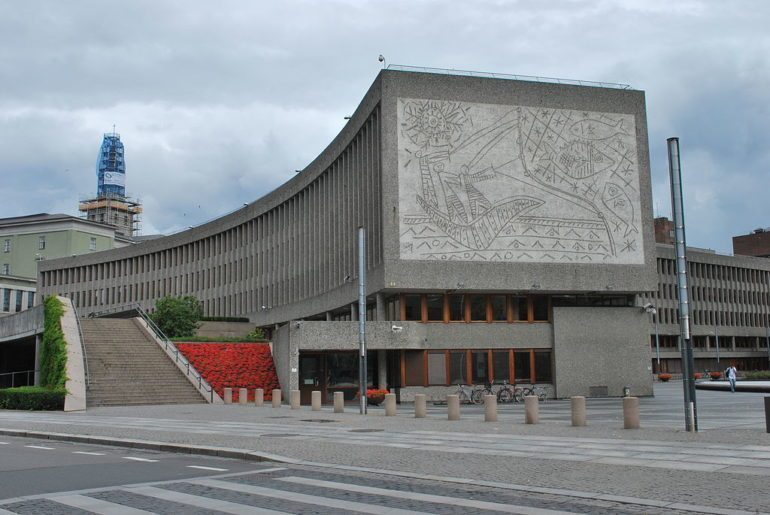To the outrage of conservationists, heritage activists, art-world figures, and Mr. Nesjar’s daughter, the Norwegian authorities removed the work on the 30th of July as part of plans to demolish Y-Block, which was damaged in a 2011 terrorist attack.
Dubbed Y-Block, the striking 1969 designed structure, designed by modernist architect Erling Viksjø, features two murals by Pablo Picasso sandblasted onto its concrete walls—a first for the Spanish painter and sculptor in this medium. One is a monumental relief named The Fisherman that graces the building’s facade facing the bustling street Akersgata. A second smaller work, The Seagull, is located in the lobby.
The demolition of an office block that stands as a painful reminder of a horrific domestic terrorist attack—the worst in modern Norwegian history—may not seem, at first thought, to be an immediate cause for controversy. But the building is a significant one, a “monument of European importance,” per British preservation group Twentieth Century Society (C20).
Called the Y-Block, the striking building built in 1969, designed by modernist architect Erling Viksjø, features two murals by Pablo Picasso sandblasted onto its concrete walls—a first for the Spanish painter and sculptor in this medium. One is a monumental relief named The Fisherman that graces the building’s facade facing the bustling street Akersgata. A second smaller work, The Seagull, is located in the lobby.
The building was the site of the 2011 terrorist attack where the right-wing terrorist Anders Behring Breivik detonated a car bomb nearby, killing eight people and damaging the building. Mr. Breivik later murdered another 69 people, mostly teenagers, on an island near Oslo. The attack remains a source of national trauma.
Several attempts to reverse the decision — including a motion by an opposition party in Norwegian Parliament this June and a lawsuit filed last winter — failed. This spring, protesters, including a former Oslo city planner, chained themselves to the building in protest.
To read more on the protests against the demolition log on to The Architect’s Newspaper. And to read more on the aftermath of the demolition, log on to The New York Times. Read about the international support against the demolition click here and here.
Read more on Endangered Heritage.

